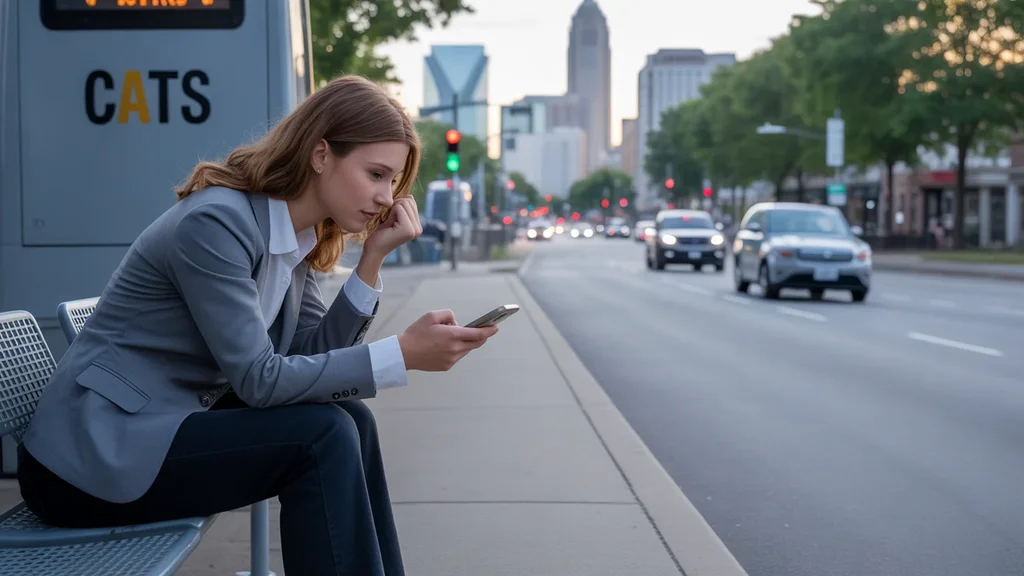What You’ll Spend on Transit in Charlotte
As a growing city, public transportation costs in Charlotte remain relatively affordable compared to driving. In 2025, a one-way fare on Charlotte Area Transit System (CATS) buses and the LYNX light rail typically costs $2.20. A 30-day unlimited ride pass, a smart option for commuters, is priced at $88. Daily passes are also available for $6.60, offering savings if you take more than two trips.
While gas prices and parking rates continue to climb, transit provides an economical alternative for getting around the Queen City. With buses and trains running frequently in popular areas like Uptown and South End, many residents find it more convenient than battling traffic.
Transit Options Available

Charlotte’s CATS network includes several ways to get around the metro area:
- CATS buses – Over 70 routes covering the city, including express services
- LYNX Blue Line – Light rail connecting Uptown to UNC Charlotte
- CityLYNX Gold Line – Streetcar service in Uptown and nearby neighborhoods
- Vanpools – Subsidized rides for groups commuting more than 15 miles
In Uptown and South End, wait times are usually under 15 minutes for both bus and light rail service during peak hours. LYNX trains arrive every 7-10 minutes on weekdays. Local bus frequency varies by route, but popular ones like the 9 Central Ave have 10-20 minute headways.
CATS also partners with regional providers to offer express buses from surrounding counties. For example, the 82X Matthews Express connects suburban residents to center city.
Monthly Cost Breakdown
Your monthly transit expenses in Charlotte depend on how often you ride. Here’s what you might expect to pay for common usage patterns:
| Rider Type | Sample Month | Estimated Cost |
|---|---|---|
| 5-Day Commuter | 20 round trips | $88 (monthly pass) |
| Weekend Rider | 8 one-way trips | $17.60 |
| Heavy User | 40 one-way trips | $88 (monthly pass) |
🏆 Winner: For most Charlotte commuters taking transit regularly, a 30-day pass offers the best deal. At $88, it pays for itself in just 20 round trips.
Is Public Transit Worth It in Charlotte?
Rising uptown parking rates, which can top $20/day, make the bus or light rail an attractive option for Charlotte workers. The average one-way commute time on transit is around 28 minutes. While that’s longer than driving on a good day, it’s competitive during rush hour.
Riding transit also lets you avoid the costs and hassles of car ownership, like insurance, maintenance, and gas. According to AAA, owning and operating a car in North Carolina costs over $700 per month on average. Even with a $88 transit pass, relying on buses and trains can mean big savings.
Of course, your decision depends on where you live and work. Neighborhoods farther from the city core may have less frequent service. And while the light rail is great for some commutes, it has a limited reach.
Ways to Save on Transit
CATS offers several discounts that can lower your Charlotte transportation costs:
- Seniors 62+ ride for $1.10 per trip or $44 monthly
- Students at many local colleges get a discount
- Riders with disabilities pay half fare
- Some employers provide free or subsidized passes
If your company participates in a transit program, you may also be able to pay for passes with pre-tax dollars through a commuter benefits plan. Be sure to ask your HR department if subsidies are available.
FAQs
What is the cheapest way to get around Charlotte?
For short trips, walking or biking is always the most affordable option. When you need to go farther, CATS buses and trains offer low fares, especially if you buy a pass.
Are there monthly transit passes in Charlotte?
Yes, a 30-day unlimited ride pass costs $88. It’s accepted on all CATS buses and trains. You can buy passes at major transit centers or online.
Is public transit reliable for work commutes?
In general, CATS service is dependable for getting to jobs in Uptown and South End. Frequency is high on the light rail and major bus routes. However, trips from outlying neighborhoods may take longer.
Getting Around Smarter in Charlotte
As Charlotte grows, so do the benefits of using transit. With gas, parking, and monthly budgets getting tighter, services like the LYNX light rail offer an affordable transportation alternative.
While a monthly pass is usually the best deal for regular riders, CATS’ $2.20 fares still beat the cost of driving for many one-off trips. As the system expands, public transit will only become a more convenient way to navigate Charlotte.
